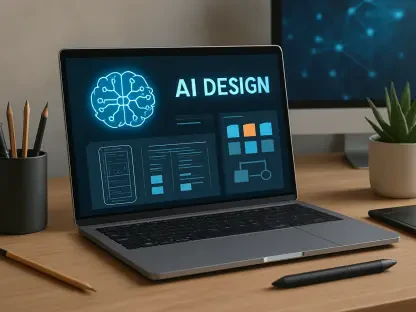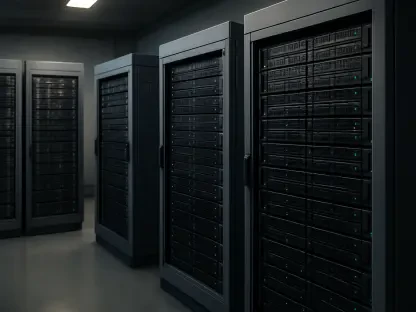Introduction to Bridging the Security Gap
In today’s digital landscape, a staggering 79% of organizations express confidence in their SaaS security programs, yet many harbor significant capability gaps, as revealed by recent industry reports like the CSA State of SaaS Security Report. This alarming “confidence paradox” underscores a critical challenge: the divide between Information Security (InfoSec) teams and SaaS administrators often leaves sensitive data vulnerable to breaches. With high-profile SaaS incidents making headlines, the urgency to secure these environments has never been clearer, especially as organizations increasingly rely on cloud-based solutions for their operations.
The purpose of this guide is to equip organizations with actionable strategies to bridge the gap between InfoSec and SaaS security teams. By fostering collaboration and aligning efforts, businesses can protect their data from evolving threats and unlock the full potential of technologies like agentic AI. This divide, if left unaddressed, risks not only data exposure but also operational inefficiencies and wasted resources due to misaligned priorities.
This comprehensive how-to guide outlines a clear path forward, detailing step-by-step instructions to strengthen SaaS security. From establishing secure configurations to implementing robust threat monitoring, the focus remains on practical solutions that unite disparate teams under a shared goal of safeguarding critical assets. Readers will gain insights into overcoming operational misalignments and building a resilient security posture in an era of rapid technological change.
Why Securing SaaS Environments Matters
The growing reliance on SaaS platforms has transformed business operations, but it has also introduced new vulnerabilities that cannot be ignored. Data breaches in these environments are becoming more frequent, often catching organizations off guard due to a false sense of security about provider protections. Many assume that SaaS vendors handle all security aspects, overlooking their own responsibility to configure and monitor these systems effectively, which amplifies risks.
Collaboration between InfoSec and SaaS teams is essential to address these challenges and prevent costly incidents. Without a unified approach, gaps in access management, data protection, and threat detection can persist, leaving organizations exposed to malicious actors. Bridging this divide not only mitigates risks but also paves the way for safely leveraging advanced tools like agentic AI, which rely on secure data environments to function optimally.
The stakes are higher than ever as cyber threats evolve alongside technology adoption. A lack of alignment between teams often results in delayed responses to incidents and inefficient resource allocation. By prioritizing joint efforts, businesses can transform SaaS platforms from potential liabilities into secure, innovative spaces that drive growth and efficiency.
Understanding the InfoSec-SaaS Misalignment
The divide between InfoSec and SaaS teams stems from historical and operational differences in their roles within an organization. InfoSec professionals are tasked with enforcing broad IT security standards across all systems, focusing on overarching policies and visibility. In contrast, SaaS administrators manage specific platforms, often without the deep security expertise needed to align with enterprise governance, leading to critical oversights.
These misalignments manifest in practical security gaps, such as improper identity and access management or inadequate protection of sensitive data. For instance, SaaS environments may suffer from insecure integrations due to a lack of IP restrictions or failure to adhere to the Principle of Least Privilege (PoLP). Such issues are compounded by differing terminologies and experiences, which hinder effective communication and problem-solving between the two groups.
Moreover, unverified or incomplete fixes often exacerbate vulnerabilities rather than resolve them. InfoSec tools may not fully capture the nuances of SaaS-specific risks, while administrators might apply surface-level solutions without addressing underlying issues. This disconnect highlights the urgent need for alignment to ensure that security measures are both comprehensive and tailored to the unique challenges of SaaS platforms.
Step-by-Step Strategies to Strengthen SaaS Security
This section provides a detailed roadmap for uniting InfoSec and SaaS teams through three core strategies. Each step is designed to tackle specific aspects of the divide, offering clear instructions and practical tips to enhance the overall security posture of SaaS environments. By following these guidelines, organizations can build a collaborative framework that mitigates risks effectively.
Strategy 1: Establish a Secure SaaS Configuration Baseline
Step 1.1: Collaborate on Secure Configurations Using PoLP
Begin by fostering joint efforts between InfoSec and SaaS teams to establish a secure baseline configuration rooted in the Principle of Least Privilege (PoLP). This principle dictates that users and applications should only have access to the resources necessary for their tasks, minimizing the risk of unauthorized exposure. Both teams must work together to define and implement role-based permissions, ensuring that configurations align with organizational security policies while addressing platform-specific nuances.
Step 1.2: Combine Expertise to Address Threats
Focus on aligning InfoSec’s understanding of evolving cyber threats with SaaS administrators’ detailed knowledge of their platforms. Regular reviews of connected apps and permissions are crucial, as misconfigurations in these areas often stem from knowledge gaps. Schedule quarterly audits to assess integration accounts and third-party apps, removing unnecessary access and adjusting settings like OAuth to prevent overexposure of sensitive data.
Step 1.3: Leverage Automation for Consistency
Manual configuration management can be error-prone and unsustainable, especially in large-scale SaaS environments. Implement automation tools and agentic AI to streamline the process of maintaining secure settings. These technologies can identify and rectify insecure configurations, such as excessive permissions, with greater accuracy and speed, reducing human error and ensuring consistent application of security standards across platforms.
Strategy 2: Conduct a Comprehensive Security Self-Assessment
Step 2.1: Perform Regular Risk Assessments
Initiate an in-depth security self-assessment to uncover hidden vulnerabilities and clarify responsibilities between InfoSec and SaaS teams. This process should be conducted at least annually, comparing perspectives on risks like identity access management and data encryption. Use structured checklists to evaluate areas such as password compliance, IP restrictions, and sensitive data classification, identifying discrepancies in how each team perceives and addresses threats.
Step 2.2: Address Knowledge and Tool Gaps
Analyze the outcomes of the assessment to determine if additional training, expertise, or tools are needed. Consider whether existing personnel require upskilling in SaaS-specific security practices or if hiring specialists is necessary. Explore AI-driven solutions that can automate risk identification and recommend remediations, ensuring that both teams have the resources to tackle complex challenges efficiently.
Step 2.3: Prioritize Sensitive Data Protection
Place a strong emphasis on identifying and labeling sensitive data within SaaS environments as a foundational step. This practice enables targeted protection efforts, focusing resources on high-value assets and reducing false positives in threat monitoring. Implement data classification protocols to ensure faster response times during incidents, enhancing overall security by narrowing the scope of potential exposure.
Strategy 3: Build Robust Threat Monitoring Systems
Step 3.1: Define Shared Monitoring Responsibilities
Establish a clear division of monitoring duties, with InfoSec teams handling high-risk alerts through centralized tools like Security Incident and Event Monitoring (SIEM) systems. SaaS administrators should focus on providing detailed platform logs and customizing dashboards for deeper insights into specific environments. Create a responsibility matrix to document these roles, ensuring accountability and seamless collaboration during threat detection.
Step 3.2: Integrate Tools and AI for Enhanced Detection
Combine InfoSec’s broad security tools with SaaS-specific observability solutions to achieve comprehensive defense. Integrate agentic AI capabilities, such as those found in platforms like Agentforce in Security Center, to enable real-time detection of threats like unauthorized data exports. Ensure that these systems are configured to correlate user context and logs, providing actionable intelligence for rapid response to anomalies.
Step 3.3: Test and Refine Escalation Processes
Regularly test monitoring and response mechanisms to validate their effectiveness before an actual incident occurs. Conduct simulated breach scenarios biannually to assess escalation paths, ensuring that both teams understand their roles during emergencies. Refine processes based on test outcomes, addressing bottlenecks and communication gaps to guarantee readiness for real-world threats.
Key Takeaways for SaaS Security Success
This section summarizes the actionable strategies outlined in the guide for quick reference and reinforcement of core concepts. These points distill the essential steps organizations must take to secure their SaaS environments effectively.
- Secure Configurations: Collaborate on a baseline using PoLP and automation to prevent misconfigurations and limit access risks.
- Self-Assessments: Regularly assess risks to uncover gaps and build team capability with targeted training and tools.
- Threat Monitoring: Implement shared monitoring with integrated tools and AI for real-time threat detection and response.
SaaS Security in an AI-Driven Landscape
As agentic AI continues to reshape SaaS environments, the implications of bridging the InfoSec-SaaS divide become even more significant. The rapid data processing capabilities of AI can inadvertently increase exposure risks if security measures lag behind technological advancements. Organizations must adapt to these dynamics by prioritizing robust protections that keep pace with innovation.
Looking ahead, evolving cyber threats will demand continuous collaboration and investment in advanced tools like SaaS Security Posture Management (SSPM) systems and platform-specific solutions. Specialized AI agents can play a pivotal role in identifying and remediating vulnerabilities swiftly, ensuring that sensitive data remains secure. Staying proactive in this space requires a commitment to ongoing learning and adaptation.
The integration of AI-driven security systems also opens new avenues for efficiency, but it comes with the challenge of managing complex environments. Balancing innovation with risk mitigation will be a key focus for organizations aiming to maintain a competitive edge. Future strategies must account for these dual priorities, embedding security into every layer of SaaS operations.
Final Thoughts and Next Steps
Reflecting on the journey to bridge the InfoSec-SaaS security divide, organizations tackled critical misalignments by implementing secure configurations, conducting thorough self-assessments, and establishing robust threat monitoring. These efforts laid a foundation for stronger collaboration, turning potential vulnerabilities into fortified systems. The commitment to uniting teams proved essential in navigating the complexities of SaaS environments.
Beyond these achievements, the path forward demands sustained action to address emerging challenges. Businesses need to consider embedding SaaS security specialists or liaisons within InfoSec teams to facilitate ongoing knowledge exchange. Investing in AI-enabled tools offers a way to stay ahead of threats, transforming SaaS platforms into secure frontiers for innovation.
As a final consideration, organizations must prioritize continuous improvement in their security practices. Exploring advanced solutions tailored to specific platforms and fostering a culture of shared responsibility ensures long-term resilience. By taking these proactive steps, companies position themselves to not only protect their data but also drive growth in an increasingly digital world.









